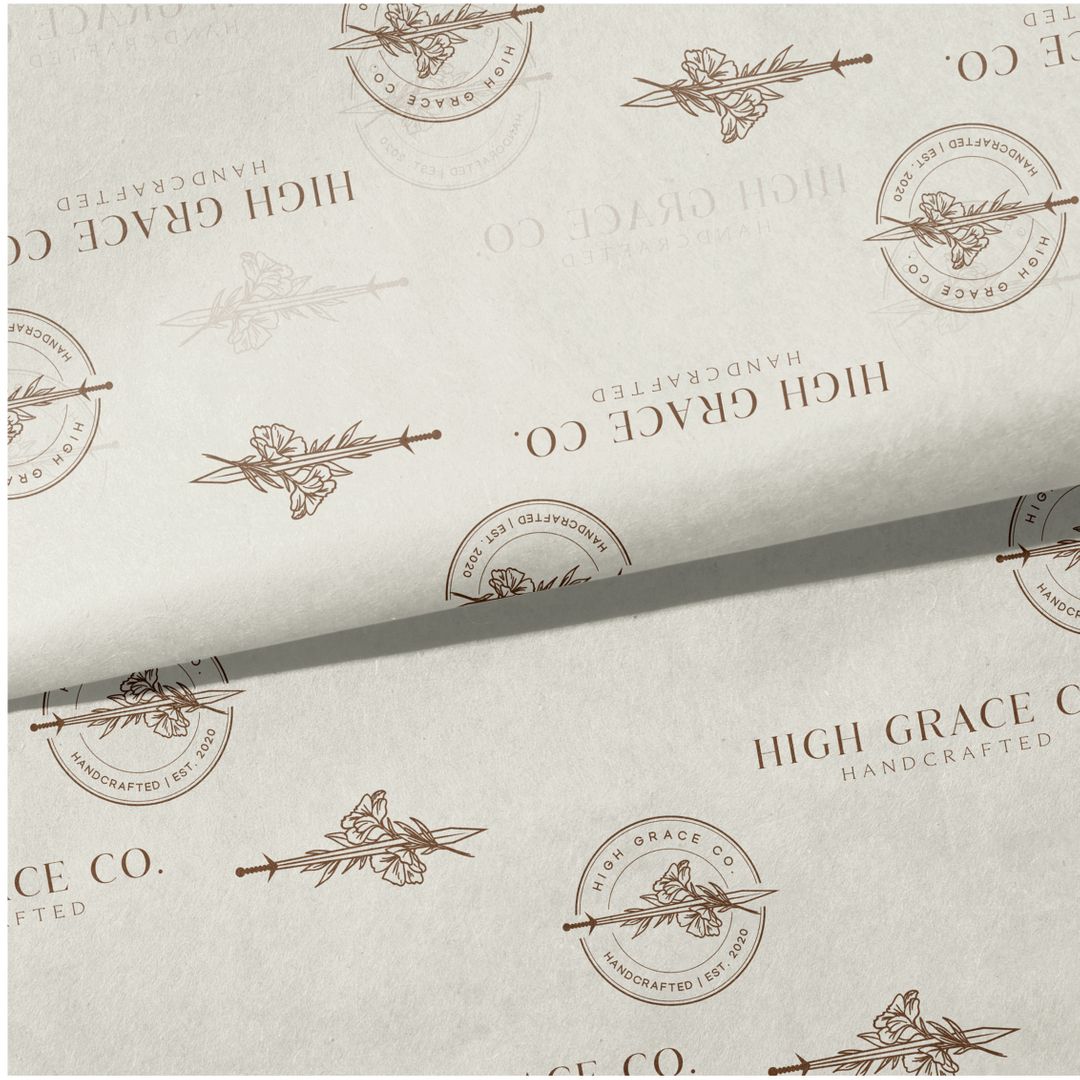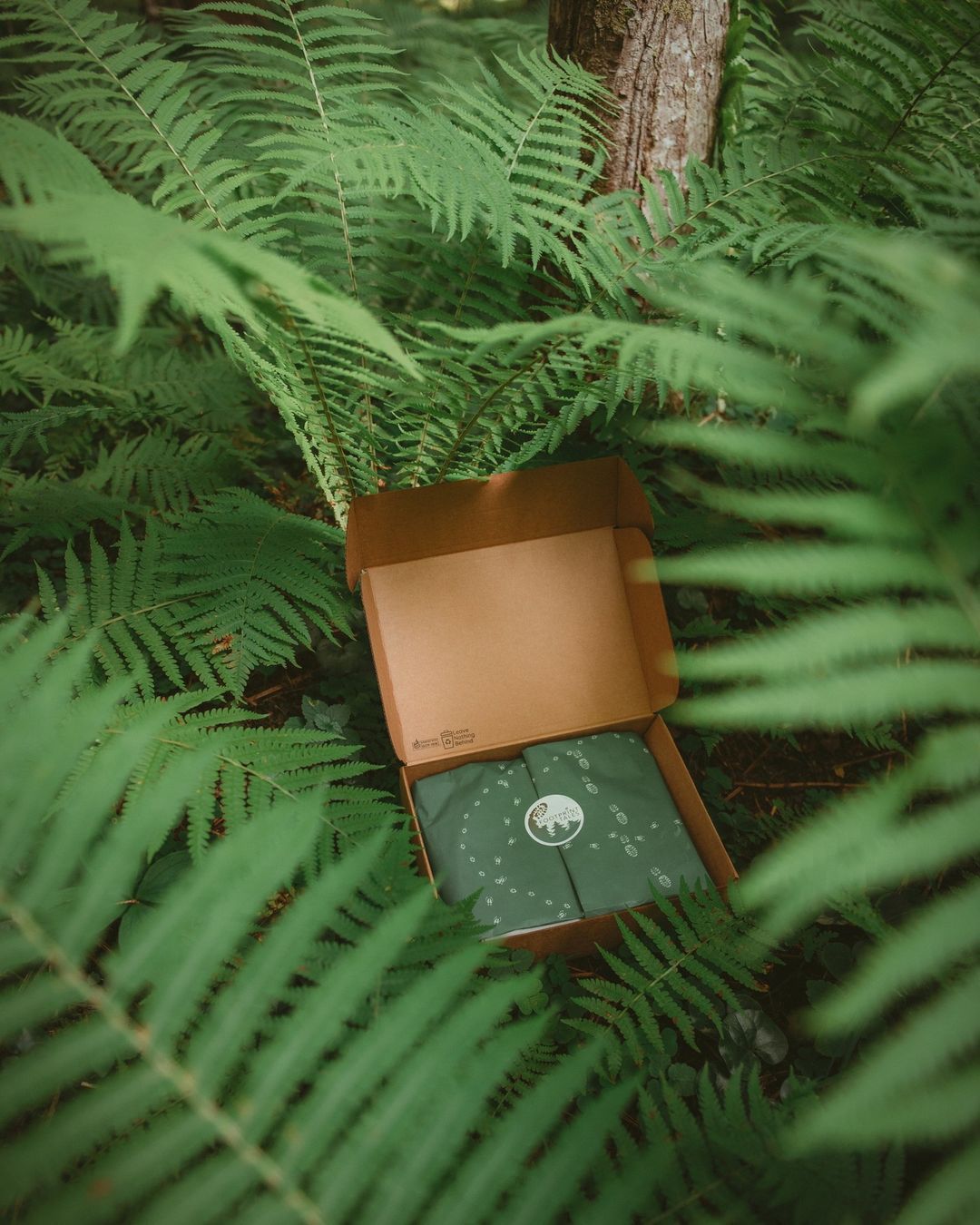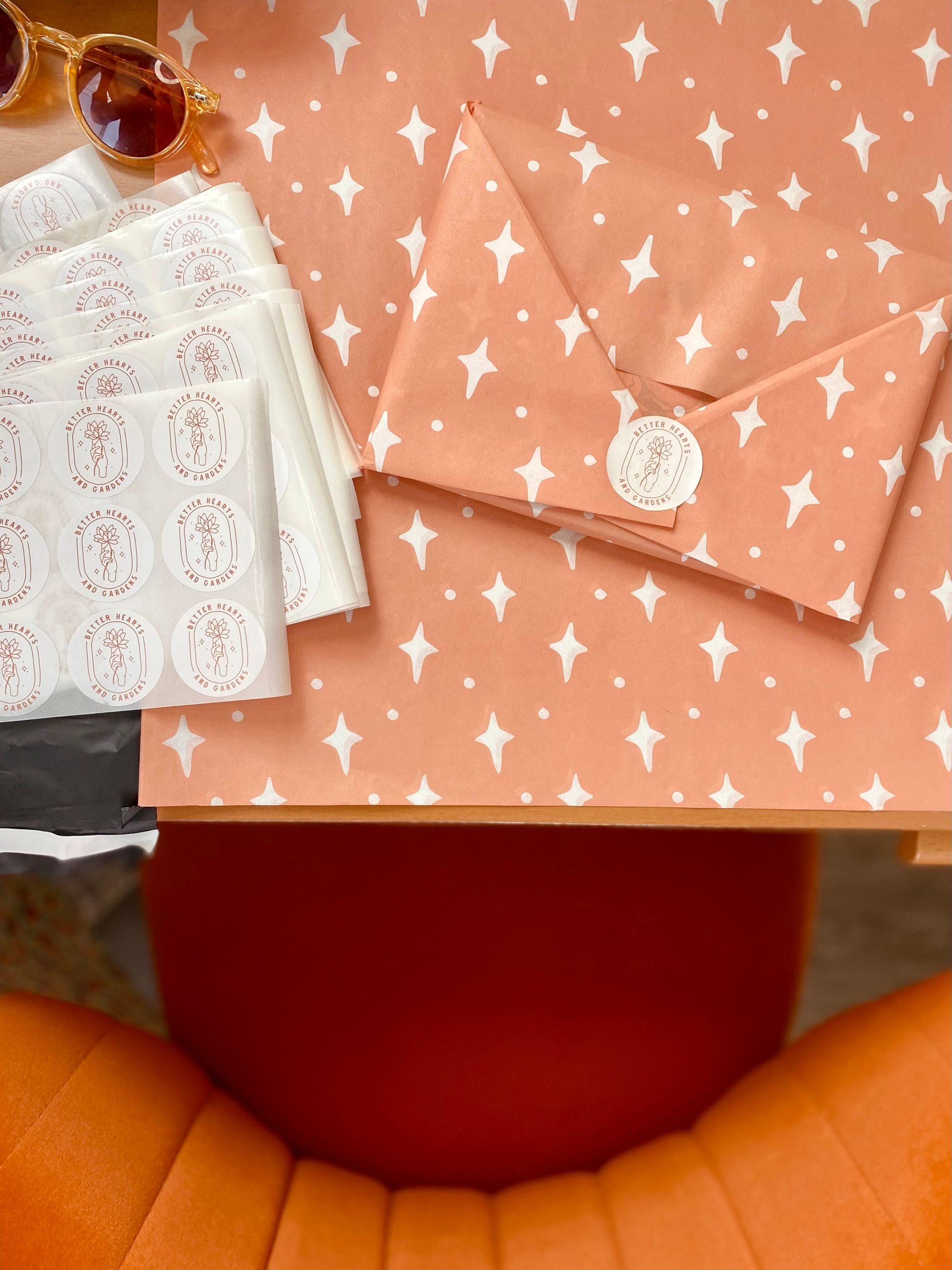noissue custom tissue paper by @betterheartsandgardens
Both eco-conscious consumers and businesses commonly ask this question. But as is often the case with sustainability, the answer isn’t as straightforward as we might like.
Packaging materials like packing peanuts and bubble wrap have taken a dive in popularity because they are difficult to dispose of responsibly. Today, 67% of consumers consider it essential that their purchases come in recyclable packaging.
To win over this big chunk of shoppers, ensure your packaging is as eco-friendly as possible.
Tissue paper is a versatile form of packaging that can be used as wrapping paper, to line gift boxes, or to pad out empty spaces within packages. As a paper product, it also gives online orders a more premium vibe than plastic packaging.
So the golden question is: can tissue paper be safely recycled?
The answer? It depends.
In this blog, we will clear up this confusing topic and get to grips with what recyclable tissue paper means - and why it’s important to do your research!
What is tissue paper?

Tissue paper is a thin, translucent paper with a GSM (grams per square meter) ranging from 10 to 35. By comparison, your standard sheet of office paper is around 70 GSM. This makes tissue paper of the most delicate types of paper available, well-suited to like gift wrap or for adding flair to gift bags.
Tissue paper is made by taking paper fibers, usually recycled paper or wood chips, and mixing it with water to form a paper pulp. This mixture is then spread thin and flattened through a series of rollers to create a sheet that can be cut up once dry.
Tissue Paper Types
In addition to packaging, tissue paper has several other uses, including:
- Paper towels
- Facial tissues
- Toilet paper
- Paper napkins
In other words, we’d struggle to get by if we didn’t have tissue paper within easy reach!
When is tissue wrapping paper recyclable?

As a paper product, tissue paper is technically recyclable if made of recycled materials or virgin wood pulp. However, this depends on a few different factors, including:
Whether foil or glitter is used
Foil and glitter are great additions to liven up plain wrapping paper, but this comes at a cost to recyclability. Foils and glitters usually contain microplastics, which are contaminants in the recycling process. This means they can make a whole recycling bin’s worth of paper non-recyclable - destined for the landfill.
What inks are used for printing
Not all inks used to create tissue paper are alike. Traditional petroleum-based inks are not biodegradable and cannot be recycled. Plus, they contain high quantities of VOCs or volatile organic compounds, which harm the environment.
For this reason, printing companies have been switching to soy-based and water-based inks. These inks are eco-friendly, recyclable, and produce more vibrant, long-lasting colors, making them a sustainable option for new paper products such as cardboard boxes or tissue paper.
Whether it’s acid-free
Some paper-making techniques call for using acids to decrease absorbency and minimize ink bleeding. Sulfur, for example, is often added to wood pulp to increase the whiteness of the paper. But when the fibers within tissue paper naturally break down, these acids are released, which is not good news for the environment.
Acidic paper also turns brittle and fades with age, even when appropriately stored away from direct sunlight. For a more eco-friendly and better quality product, seeking out tissue paper made using an acid-free process is best.
Acid-free tissue paper is fully recyclable and compostable, so you don’t have to worry about any nasty toxins being released. Because it’s much sturdier and longer-lasting, you also have far more opportunities to reuse your tissue paper in fun and inventive ways (more on this in a bit!)
To sum up, tissue paper is recyclable if it is:
- Acid-free
- Uses soy-based inks
- Free of glitter, foil, or metallics
This is why all noissue custom tissue paper is made from acid-free recyclable paper and uses only soy-based inks, making it 100% recyclable, biodegradable, AND compostable! That’s pretty tough to beat!
How to reuse tissue paper
Even if a paper item is recyclable, viewing it only as a single-use item can never be considered sustainable.
While recycling is a great habit, it’s important to remember that it’s the last of the 3 Rs (reduce, reuse, recycle). In addition to minimizing the amount you’re using in the first place, finding clever ways to reuse your tissue paper is vital to creating a circular economy that keeps materials in use for as long as possible.
Fortunately, tissue paper has many reuse options, making running a creative, eco-friendly operation easy. Check out our top repurposing ideas for tissue paper below:
Party decorations
All you need is scissors to turn tissue paper sheets into beautiful garlands, pom-poms, or flowers for your next big event. Pinterest is awash with how-to guides, so take a look!
Party favors/gift bags.

Tissue paper is a beautiful addition to add colorful flair to gift bags or party favors. Scrunch the tissue into a little bouquet and add it to your bag, as The Festive Collective shows.
Reusable gift wrap
One of the easiest ways to reuse your issue paper is to smooth it out and save it for wrapping gifts during the holiday or beyond. Consider including a note in the package to encourage the recipient to save, reuse, and keep the cycle going!
Quirky wall hangings

As illustrated by Jacqueline Colley, custom tissue paper can be an artwork in its own right. Staple or glue tissue paper to a frame or canvas to create fantastic wall art!
A background for flat-lay photography

Standing out from the crowd as a small business can be a real challenge, especially when competing with short attention spans. Your tissue paper design makes for an eye-catching background for product photography, as shown here by Black Lamb Studio’s savvy social media marketing.
Mulch for composting
Compostable tissue paper with no toxins and biodegradable ink - like noissue custom tissue paper! - is an excellent addition to you and your customer’s compost pile. Because paper is good at absorbing water and food waste, it also helps to absorb any smells in your compost.
As well as your business putting these ideas into action, consider sharing them on your social channels to show your customers how adaptable your tissue paper is!
Pro tip: Consider printing messages onto your custom tissue encouraging consumers to reuse/recycle/compost!
How to dispose of tissue paper responsibly
Consider reuse options
Reusing your tissue paper should always be your first port of call for maximum sustainability. Check out the complete list of repurposing suggestions above to kickstart a fun, creative project!
Check whether your curbside recycling program accepts tissue paper
Even though tissue paper is recyclable, some recycling facilities do not take tissue paper for drop-off or pick-up as easily as something like kraft paper. This is because a lot of commercially-made sheets use glitter or lamination. It’s easier for facilities to ban tissue paper altogether rather than sort through which tissue paper can be recycled.
It’s essential to check with your local recycling center to see whether you can add tissue paper to curbside recycling. If not, industrial or home composting offers a great alternative.
Determine if anything about your tissue paper might impact disposal.
Before you drop off your tissue paper in the compost or recycling bin, hold fire; it’s important to check it thoroughly for any additions that might make it difficult to recycle. This includes any glitter, foil, or coatings that will not degrade naturally or will contaminate the recycling process.
A great way to check this is through the scrunch test. Take a piece of tissue paper and scrunch it up in your hand. If it holds this shape, it can most likely be recycled. If it immediately flattens out due to being laminated/plasticized, it isn’t recyclable.
To sum up, tissue paper is sometimes recyclable depending on how it’s been made. Because it’s impossible to know the manufacturing of store-bought tissue paper, it’s a good idea to buy from a packaging supplier that can verify its claims about recyclability.
That's a wrap!
noissue operates on a circular framework by only creating packaging which is compostable, recyclable, or reusable (or all three!). By making the switch to circular packaging, you can be confident that your brand doesn’t cost the earth.
